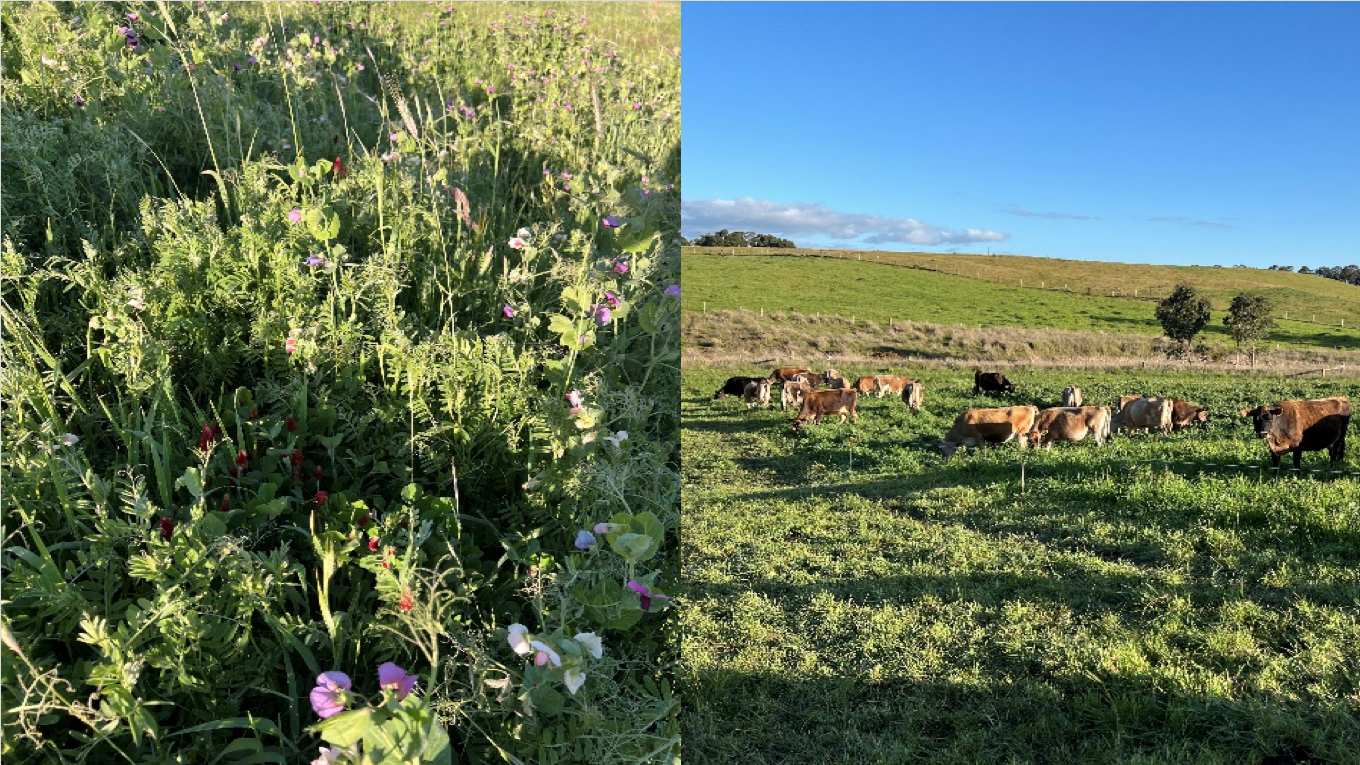Regenerative Farming 1

Independent Contributor
Regenerative agriculture is the new farming buzzword, but few can agree on what it means.
This is Part 1 of my own journey to get to the bottom of it…..
“Regenerative agriculture is about restoring and enhancing ecosystem function on farms and in landscapes through practices designed to work with the landscape.” (NSW Government)
According to the World Economic Forum, “Regenerative agriculture focuses on improving soil health through methods including crop rotation and reduced ploughing.”
I asked my fertiliser rep what they were doing in the regenerative space…..she asked what it meant for me…..I said I thought I already was, in that our goal to be sustainable and profitable was to be constantly improving the farm, soil first….she agreed I was and most of her other clients too! Then again she sells the stuff they are calling poison now.
In the south of NZ on our dairy farm we have 900mm of rain reasonably well spread across they year, P levels around 30 and pH above 6. In the past we may have been guilty of excessive nitrogen use, but nowadays capped at below 200 units of N a hectare. The soil looks fine and earthworm numbers seem good, after years like this one with a wet spring we will aerate areas that suffered pugging.
We consistently grow 12-14t of dry matter per hectare, young pastures often 30% more and older less. We have changed to using a tow and fert mix where each round (circa 30 days) after the cows have grazed a liquid fert mix is sprayed on containing 10 units of N, dical phosphate, limeflour, salt, fulvic acid and molasses as well as a low rate of trace minerals…..OK I sneak a bit of gibberellic acid in occasionally…..
We have delved into mixed species, more red clover and plantains, and on our ‘out paddocks’ a 16 species mix including sunflowers, radish etc. None lasted nearly as well or yield as highly on the shoulders of the seasons, so we have reverted to tried and trusted perennials with a bit more red and white clover.
We did see the benefits of more legumes, which is logical, however the red clovers and plaintain struggle to survive in wet/pugging type rain events. Some of the regen mix plants with their deep roots showed aeration benefits. In summary we are open to doing more when we see realistic scalable techniques. The old man thinks it’s just another millennial with an Arts degree justifying a Wellington salary to come up with another name for what we already do…..But for me regenerative is really sustainability, and the first part of a sustainable business is paying the interest bill running at 50% equity.
Last year a regen farmer in our area had a fielday on the benefits of a ‘bale grazing’ cow wintering system, and composting techniques, but with OAD milking and a low stocking rate, I’m unconvinced of their businesses ability to carry much debt…..
I’ve been with Hamish, a passionate regenerative farmer in Victoria, who showed me how well his ‘Soil-kee’ renovator had established his muti species pasture. It really had, with good levels of vetch, peas, red clovers, sunflowers and others. His 20 cows shifted once a day in a circa 60-day rotation looked fantastic…..swales and shelter to catch rainfall are clearly going to help. No fertiliser and the multispecies converting Nitrogen from the air and ‘mineralising’ other elements already in the soil.
His advice on my regen species not yielding or persisting,
1 – Spraying out with Glysophate first affecting soil health.
2 – Broadcasting seed as opposed to using a ‘Soil-kee’ my 2 mistakes…..
I was very surprised how well his seed mix had struck using the soil-kee and not spraying out the competition, so took it on board…..but how the hell am I gonna manage 700 cows, produce 350,000 Milk Solids, and change to a 60-day rotation. My situation is similar to farmers in Gippsland, Tasmania and anyone with pretty good rainfall (700mm plus), for the purist to consider us 100% regenerative I expect we would need to be using a multi-species pasture with minimal or no fertiliser, sprays and ploughing.
Regen in the cropping space a very different field, when you look to the USA or other regen publications carbon sequestration is often the topic. Nowadays with political pressure to get to net zero carbon, it feels like it’s a race to capture the carbon in the soil to save the planet.
Arguably the improvements us as grass-based farmers in above 700mm rainfall areas can make are insignificant compared to reversing desertification in the lower rainfall areas of the whole planet.
This is a photo of regeneration in West Australia, the benefits, carbon sequestration and climate cooling effects pretty obvious.
Next Steps for future articles
1. Hamish has dairy farmers in the process of scaling his system, which I will visit.
2. My fertiliser rep will do more ‘soil health’ tests to establish organic carbon content and share other results.
3. My seed rep has established regen mixes to view.
4. Visit Hamish’s farm in a dry Victoria February to see what’s growing.






